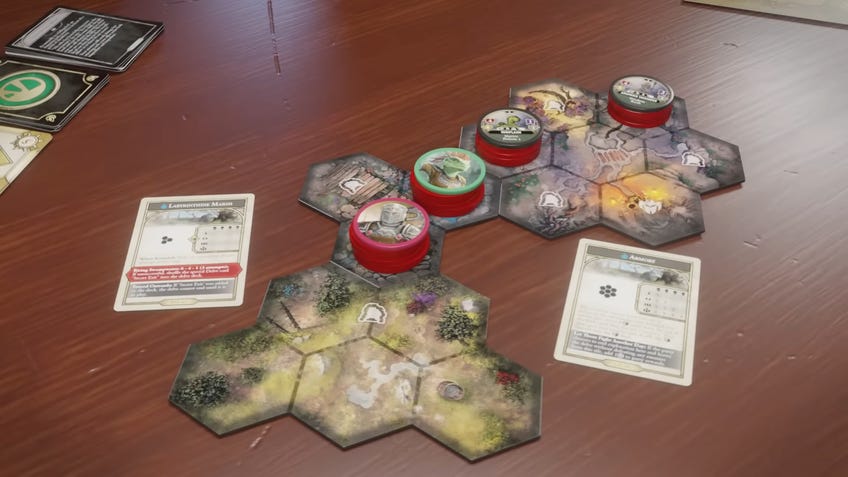Too Many Bones maker’s The Elder Scrolls board game is a more digestible Gloomhaven experience
Keep an eye on that suspicious-looking mudcrab
The Elder Scrolls is no stranger to tabletop adaptations, many of which attempt to capture the grand scale of adventure that is a hallmark of its video game forebears. Betrayal of the Second Era, a board game currently crowdfunding on Gamefound, takes a slightly different tack with character-focused mini-campaigns across the face of Nirn.
Created by Chip Theory Games, the studio behind the intentionally plastic-lite strategy game Too Many Bones and tower defense-meets-MOBA battler Cloudspire, The Elder Scrolls: Betrayal of the Second Era does not skimp players on a dutifully recreated experience. The campaign-based board game for one to four players combines randomly generated encounters and a small campaign arc with character and class systems built around dice and their now famous neoprene mats.
Player-controlled characters are the heart and soul of campaigns. The group will construct their own by first choosing amongst ten races, ten skill lines, and ten classes - the last of which grant exclusive innate abilities and a pair of skills. All of these elements are represented by dice and tokens that slot into character mats and represent their martial and magical capacity. Chip Theory states that the modular nature will keep combat fresh over the course of play.
The campaign system is similarly modular: the group will choose one of five regions as the setting of their adventure - High Rock, Black Marsh, Skyrim, Morrowind or Cyrodiil. Each will assign a different overarching goal and endgame scenario where the group will face the elusive and mysterious sorcerer Deslandra. How their story begins will depend on which of the six major guilds they represent. Are they a band of assassins under the shadowy banner of the Dark Brotherhood, or seek storied treasure on behalf of the Undaunted.
Guild and region combine to assign quests to the adventuring party, each of which span the course of a play session. Completing or failing those quests will reward keywords that eventually construct the campaign’s finale. Bound this way, Betrayal of the Second Era looks to evoke the class-based cooperative combat of Gloomhaven and Frosthaven without saddling folks with years of continued obligation.
Speaking of combat, each session’s quest will look a little different depending on the nature of the encounter. Clashes are all-out brawls where victory goes to whoever is left standing, while delves involve exploring the hidden places of a chosen region - and dealing with whatever threats are uncovered. Critically, delves can be abandoned if the heat rises too high. The last encounter, dungeons, are a hybrid of the two and are specifically tied to each region’s campaign. Certain elements, such as creature placement, treasure and optional rules change each time an encounter is built, so two Skyrim campaigns won’t play out exactly the same.
Between the multi-modal campaigns, side quests and procedurally generated encounters, Chip Theory Games is betting on Betrayal of the Second Era’s longevity coming from replayability and not the albatross of Gloomhaven’s massive campaign lengths. That said, fans of The Elder Scrolls often play it for the exploration and social elements rather than interesting combat encounters. Will this board game be able to capture some of that playstyle, or will the design leave players wondering who they ever bothered to put points in Speech?
The Gamefound campaign for The Elder Scrolls: Betrayal of the Second Era will run through April 21st and has already surpassed the $2 million - perhaps not surprising given Chip Theory’s reputation and the nearly $200 price tag of the base game. The publisher is currently predicting fulfilment to backers in most regions of the world will begin in September 2024.


